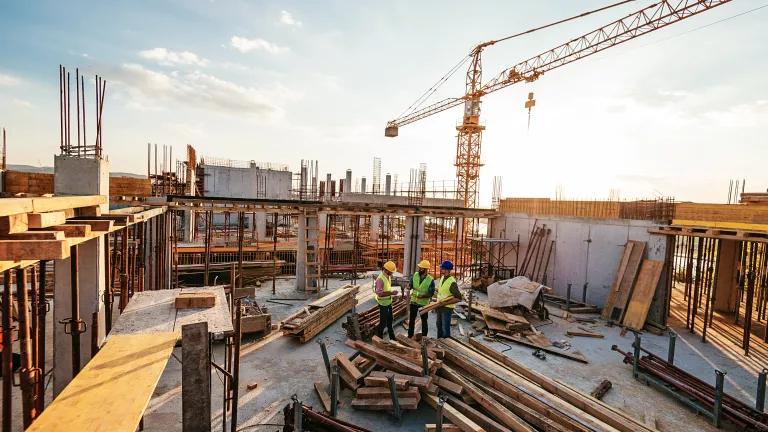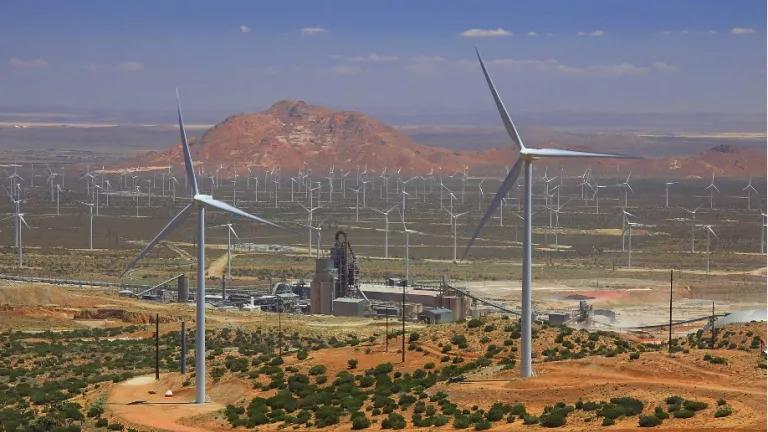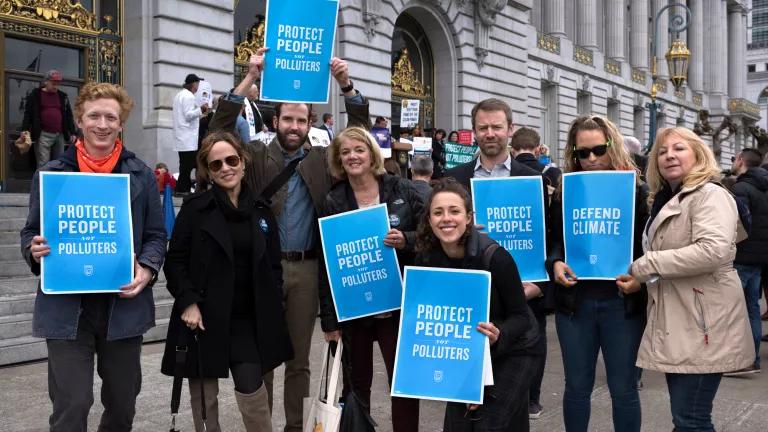New Report Details Strategies for Tackling Building Embodied Carbon
A new report released today from Arup in partnership with NRDC details the policies adopted and needed to reduce emissions from embodied carbon in California.

California's recent green building code updates address embodied carbon emissions from its largest, new construction buildings.
iStock
The emissions associated with the production of materials used in the built environment, known as “embodied carbon,” are estimated to contribute up to 11% of all global energy-related carbon emissions and a significant portion of California’s emissions. California has taken steps to address embodied carbon in materials and buildings through legislative efforts including Buy Clean California, AB 2446, and SB 596. Most recently, in August, the state’s Building Standards Commission unanimously voted to adopt mandatory embodied carbon requirements for new large commercial buildings in CALGreen, the state’s green building code.
A new report released today by the sustainable design firm Arup in partnership with NRDC, Embodied Carbon Reduction Roadmap: Strategies and Policies for the State of California, details this milestone as well as additional policies California could undertake to achieve reductions in emissions associated with embodied carbon.
The Scale of Opportunity
The report looks at different types of strategies including building reuse and using low-carbon building materials and estimates the relative proportion of embodied carbon they can reduce across the building sector. It finds that a combination of strategies, including optimizing the building during the project development, system design, procurement, and construction phases will all be needed to reach net-zero emission construction. Of these four, optimizing the project will be most impactful in the short term, while optimizing procurement of low-carbon materials will be most impactful in the long term.
Optimizing the project includes strategies such as encouraging material reuse and efficiency, material substitution for renewable materials, incorporating embodied carbon into performance-based specifications, requiring use of whole building lifecycle assessments (WBLCAs), and integrating embodied carbon considerations into building codes. CALGreen, the state’s green building code, has historically included mandatory requirements regarding planning and design; energy, water, and resource efficiency; and environmental quality. CALGreen has different tiers, including more aggressive standards that local jurisdictions can choose to adopt.
CALGreen is updated regularly, and the Building Standards Commission in August unanimously approved a mid-cycle update to require embodied carbon to be considered in commercial buildings over 100,000 square feet and schools over 50,000 square feet. Projects will be able to comply in three different ways: through reducing overall project embodied carbon by 10 percent, meeting emissions benchmarks for building materials used, or reusing 45 percent of an existing building. These initial targets are readily achievable by industry today, but as embodied carbon becomes a more widespread consideration in building design, the code can be strengthened to encourage innovation and deeper emission reductions.
AB 2446, adopted in 2022, requires buildings in California to reduce embodied carbon emissions 40 percent by 2035. While an implementation strategy has yet to be developed, it is likely that CALGreen can play a role in achieving those embodied carbon reductions.
Optimize Procurement
The most impactful way to reduce embodied carbon in buildings in the long term is through optimizing procurement and using low-carbon materials. Clean procurement policies like Buy Clean Acts and public sector incentives accelerate public and private sourcing of lower carbon materials. California has shown market leadership in low carbon material procurement through AB 262, known as the Buy Clean California Act. Buy Clean California, which requires steel, flat glass, and mineral wool board insulation used in state projects to meet embodied emissions standards, notably does not cover concrete – the material responsible for the largest share of material embodied carbon emissions in typical building projects.
Public procurement is one of the most cost-effective policies we have to bring low-carbon materials to the market. California’s net-zero cement law, SB 596, requires cement used in California to be net-zero greenhouse gas emissions by 2045. Public procurement can play a key role in bringing technologies to market like novel supplementary cementitious materials that will be instrumental to decarbonizing the sector and meeting SB 596’s targets. Other states including New York, New Jersey, Oregon, and Colorado, as well as the federal government have adopted clean public procurement policies for concrete, and California has the opportunity to follow suit.
Next Steps
California has long been a climate leader but is just beginning to adopt and implement policies to address embodied carbon emissions. Fully implementing and gradually strengthening CALGreen’s embodied carbon requirements, implementing Buy Clean California, adopting a public procurement policy for concrete, and implementing AB 2446 will be key to tackling this large source of emissions. For more information on the analysis, strategies, and policies presented in the report, you can download it here.





